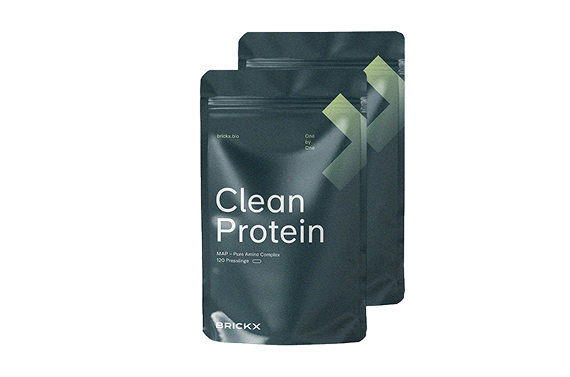High protein - the misunderstanding of an industry

1. the high-protein hype - an industrial product
In recent years, protein has evolved from a nutrient to a mass phenomenon. Protein bars, shakes and powders fill supermarket shelves and promise muscle building, weight loss and energy. But what is often overlooked: Many of these products are highly processed and contain sugar substitutes, flavorings, emulsifiers or additives - and their actual effect remains questionable. High protein is often synonymous with highly processed food - and presents the body with challenges that go far beyond the calorie content.
2. more protein, more effect? Unfortunately not.
Protein is considered the key to muscle building, performance and weight regulation. But many people overlook this: The body can only utilize a limited amount of protein. Excess protein is not stored but excreted via the liver and kidneys - than urea. What remains is a high metabolic expenditure - often without any real benefit.
What's more, most people already consume more protein than they need - through dairy products, meat, eggs, pulses or cereals. The much-cited additional requirement mainly affects top athletes or special medical cases - not everyday life.
3. how much protein does the body need - and what can it really use?
According to the WHO, the actual protein requirement is around 0.8 g per kg of body weight. The requirement may be higher for active athletes or older people - but the focus should be on quality, not quantity. Because: The body can only utilize a limited amount of protein efficiently. The rest has to be detoxified and excreted - putting a strain on the liver, kidneys and digestion.
Depending on the source (whey, soy, pea), conventional protein powders only achieve a usability of 16-32 % - the rest is either excreted or burdens the metabolism with nitrogen degradation products.
The decisive factor is not the quantity, but the quality and availability of the proteins. Because only what is actually utilized helps the body. Brickx provides the pure building blocks that the body can use directly for cell repair, muscle maintenance and hormone regulation - without detours via the digestive system.

4. hidden risks: Sugar substitutes, digestion, calories
Many high-protein products are highly processed and contain sweeteners, flavorings or sugar substitutes that not everyone's body tolerates well. Particularly sensitive people react with flatulence, diarrhea or a drop in energy levels.
The calorie content is also often underestimated: despite the „fit factor“, many of these products are energy-dense, and it is not uncommon for more to be eaten than burned off - which can even lead to weight gain in the long term.
In addition, there is often no added nutritional value: The high amount of protein is often not associated with a better supply, but with increased stress.
5 Brickx Clean Protein - function instead of filler
8 pellets per day are sufficient to supply the body at cellular level: for muscle maintenance, regeneration, hormone balance and cognitive performance. Brickx Clean Protein is based on the Master Amino Acid Pattern (MAP) - a precise combination of eight essential amino acids. The special feature:
- Up to 99 % usability
- No sugar, no flavors, no calories
- No digestion effort - intake in under 30 minutes
In contrast to classic protein powders, which provide 20-40 g of mass and often hundreds of calories, Brickx supplies the body in a targeted manner - without detours and without strain.
Conclusion
Many high-protein products focus on quantity and marketing promises - but often only deliver low biological usability and high metabolic stress. Brickx Clean Protein is based on MAP, a precisely balanced amino acid profile with up to 99 % bioavailability. The clear composition without additives makes Brickx an efficient, well-tolerated alternative to conventional protein powders that is suitable for everyday use. For all those who value functional nutrition - with proven benefits and without unnecessary strain.
-
DGE - Reference values protein: www.dge.de/wissenschaft/referenzwerte/protein
-
Tagesschau - High-protein products superfluous: www.tagesschau.de/wissen/gesundheit/high-protein-produkte-100.html
-
Verbraucherzentrale Hamburg - Sugar substitutes in protein bars: www.vzhh.de
-
Strunz, U. (2021): The amino revolution, Mankau Verlag
-
Lucà-Moretti et al (2003): Net Nitrogen Utilization of MAP: pubmed.ncbi.nlm.nih.gov/14669816
-
Wolfe, R.R. (2017): BCAAs and Muscle Protein Synthesis: jissn.biomedcentral.com/articles/10.1186/s12970-017-0184-9
-
Precision Nutrition - High-protein diets: www.precisionnutrition.com/high-protein-diet
